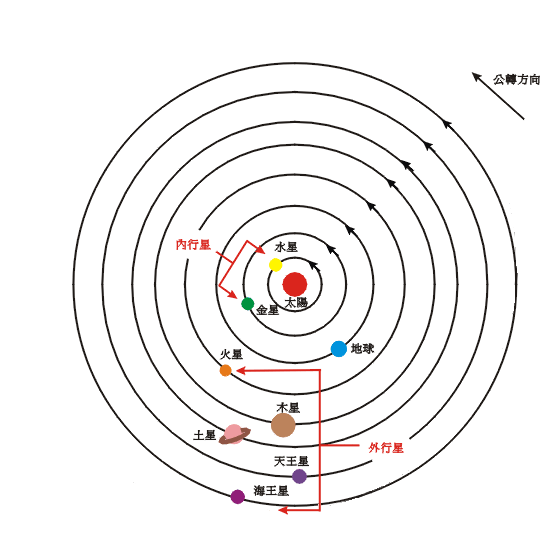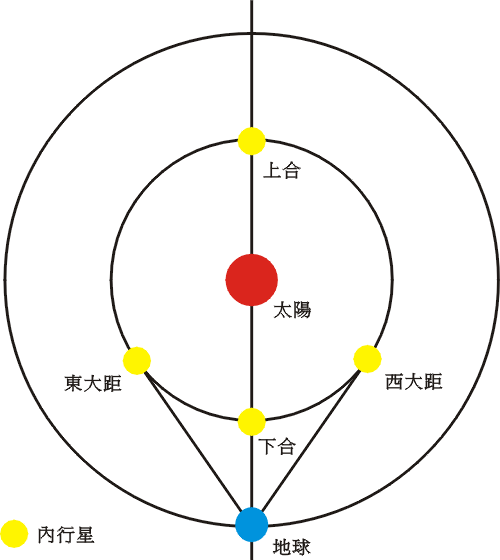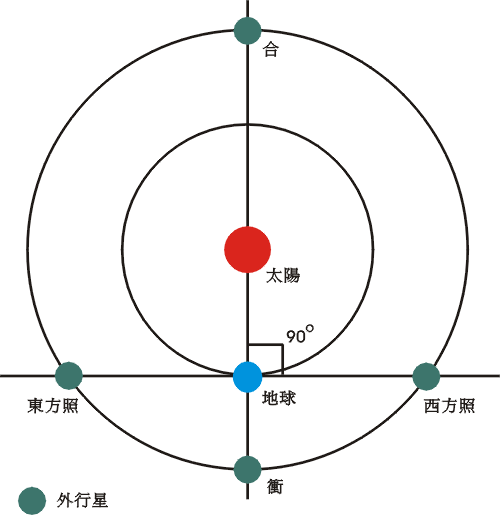Apparent motion of planets Explained
Apparent motion of planets Explained
All planets in the Solar System revolve around the Sun in a counterclockwise direction when one views them from the north pole of the celestial sphere (Figure 1). They all lie close to a plane known as the ecliptic plane.
From the Earth's perspective, the planets are observed to move closely along a circle known as the ecliptic - the apparent path of the Sun’s movement on the celestial sphere as seen from the Earth. The rise and set of a planet as observed from the Earth is related to its apparent motion relative to the Sun. This apparent motion depends on whether the planet is nearer the Sun than the Earth (an inferior planet) or further away from the Sun than the Earth (a superior planet).

Figure 1 A schematic planar view of the Solar System.
Mercury and Venus are inferior planets in the Solar System. They are closer to the Sun than the Earth. Mars, Jupiter, Saturn, Uranus and Neptune are superior planets in the Solar System. They are further away from the Sun than the Earth.
From the Earth’s perspective, the angular distance between the Sun and a planet is the elongation. An elongation of 0° is called conjunction, one of 90° is quadrature, and one of 180° is opposition.
For an inferior planet, the conjunction is called inferior conjunction if the planet is between the Sun and the Earth, and is called superior conjunction if it is on the opposite side of the Sun from the Earth. When an inferior planet follows the Sun and appears east of the Sun in the evening, it is in eastern elongation. When an inferior planet precedes the Sun and appears west of the Sun in the morning, it is in western elongation (Figure 2). As both the orbits of an inferior planet and the Earth are elliptical rather than circular, the greatest elongation varies from 18° to 28° for Mercury and 47° to 48° for Venus respectively.
At inferior conjunction, an inferior planet may appear as a dark dot moving across the Sun’s disc. This is known as the transit of the inferior planet. Such phenomenon does not occur every year because the orbit of the inferior planet does not lie exactly on the plane of the orbit of the Earth.
A superior planet at opposition is closest to the Earth and appears the brightest. At conjunction, a superior planet will be invisible due to the Sun’s glare (Figure 3).

Figure 2 Elongations of inferior planet.

Figure 3 Elongations of superior planet.